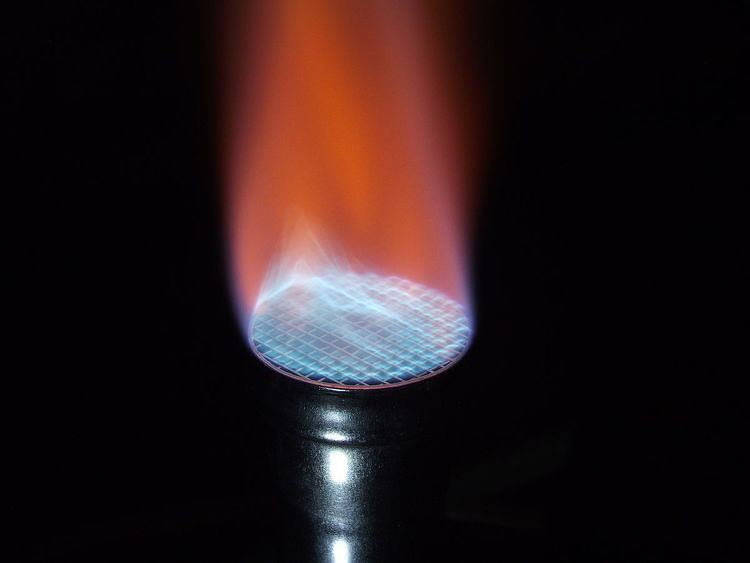 | ||
Uses Heating
Sterilization
Combustion Inventor French chemist Georges Méker Related items | ||
A Meker-Fisher burner or Meker burner is a laboratory burner that produces multiple open gas flames, used for heating, sterilization, and combustion. It is used when laboratory work requires a hotter flame than attainable using a Bunsen burner, or used when a larger-diameter flame is desired, such as with an inoculation loop or in some glassblowing operations. The burner was introduced by French chemist Georges Méker in an article published in 1905.
The Meker-Fisher burner heat output can be in excess of 12,000 BTU (13,000 kJ) per hour (about 3.5 kW) using LP gas. Flame temperatures of up to 1,100–1,200 °C (2,000–2,200 °F) are achievable. Compared with a Bunsen burner, the lower part of its tube has more openings with larger total cross-section, admitting more air and facilitating better mixing of air and gas. The tube is wider and its top is covered with a plate mesh which separates the flame into an array of smaller flames with a common external envelope, ensures uniform heating, and also prevents flashback to the bottom of the tube, which is a risk at high air-to-fuel ratios, and limits the maximum rate of air intake in a Bunsen burner. The flame burns without noise, unlike the Bunsen or Teclu burners.
